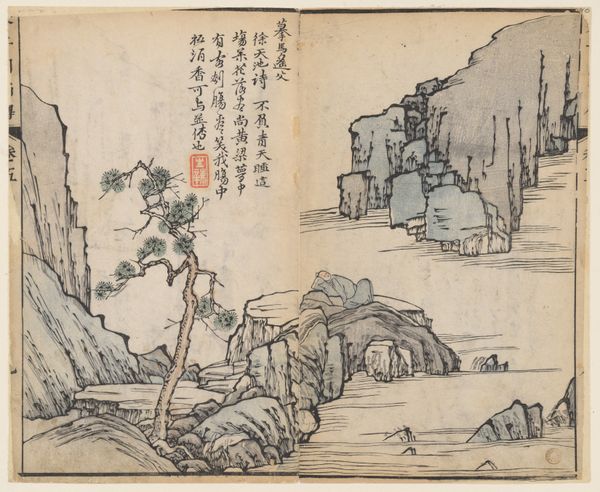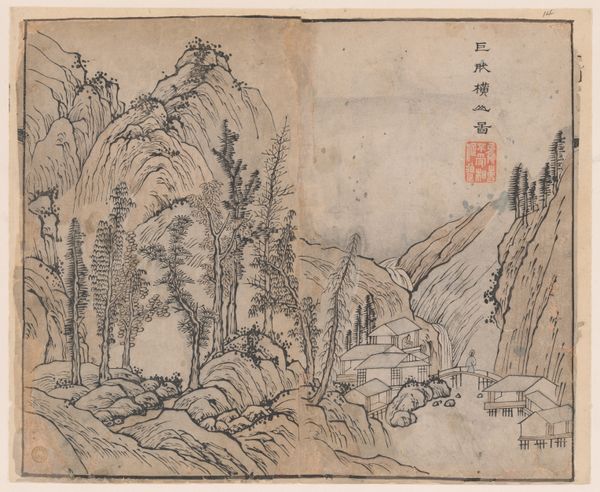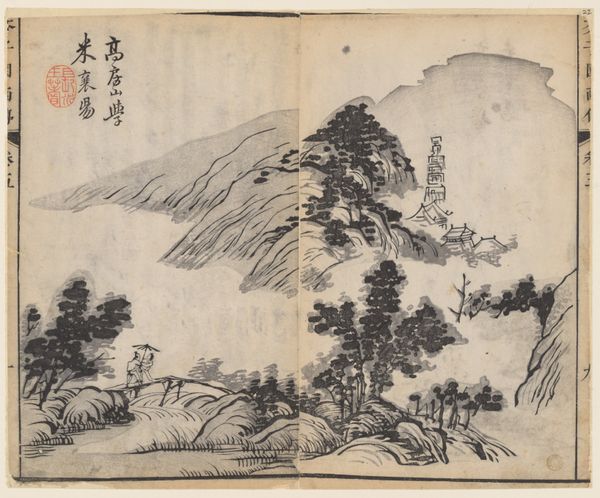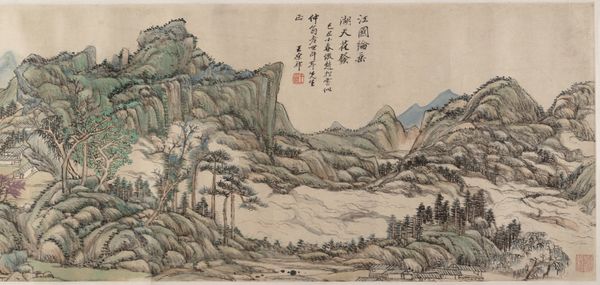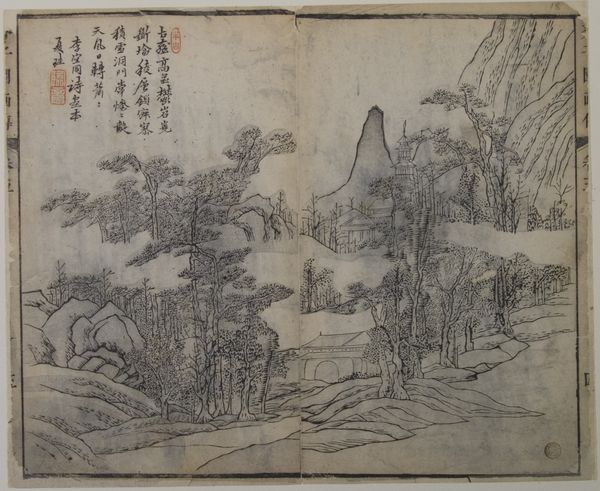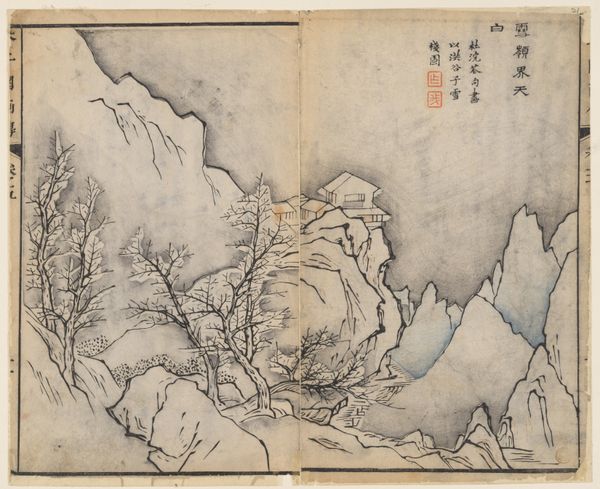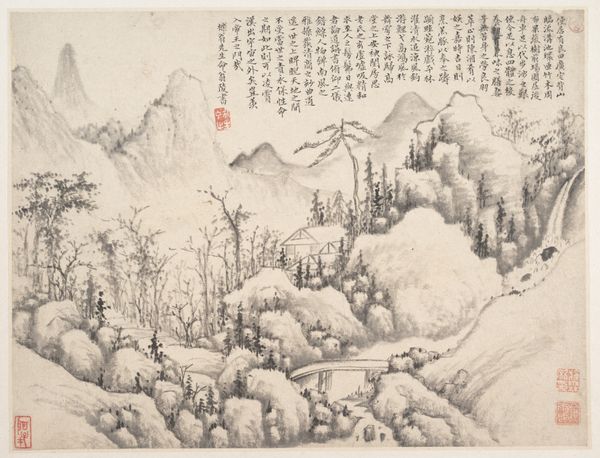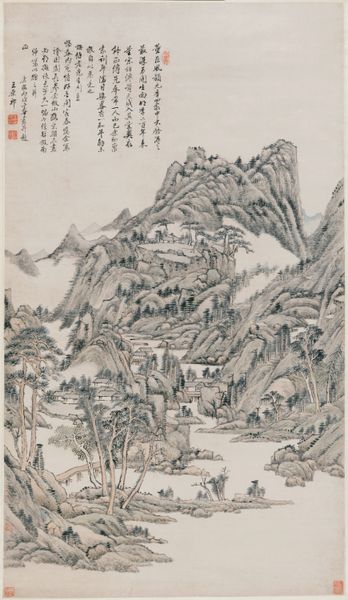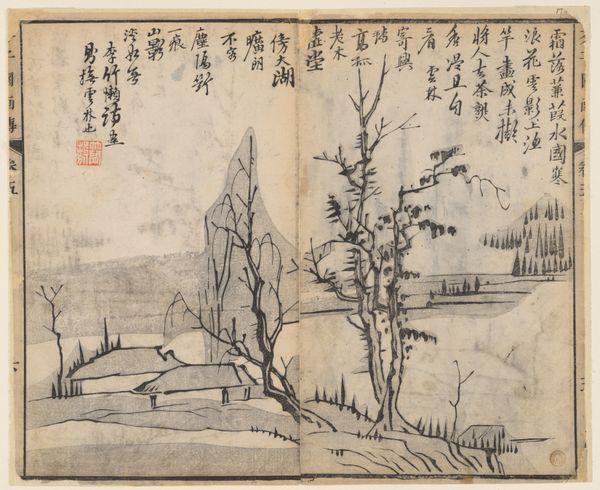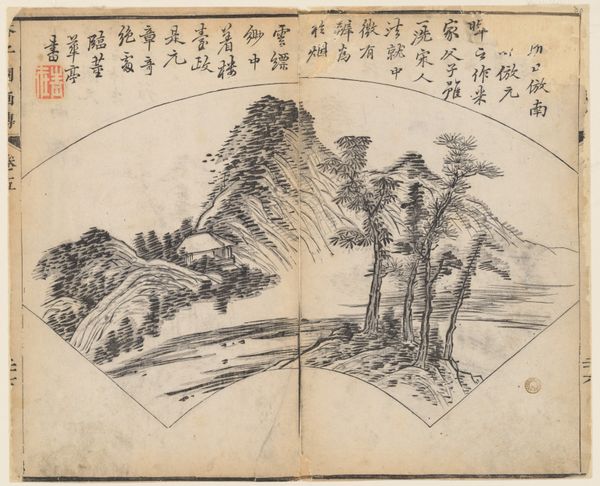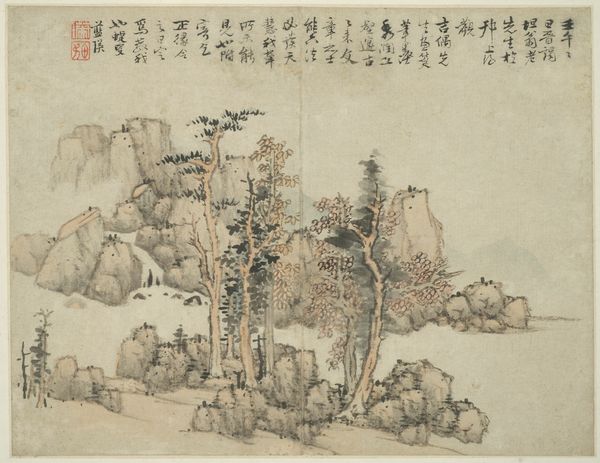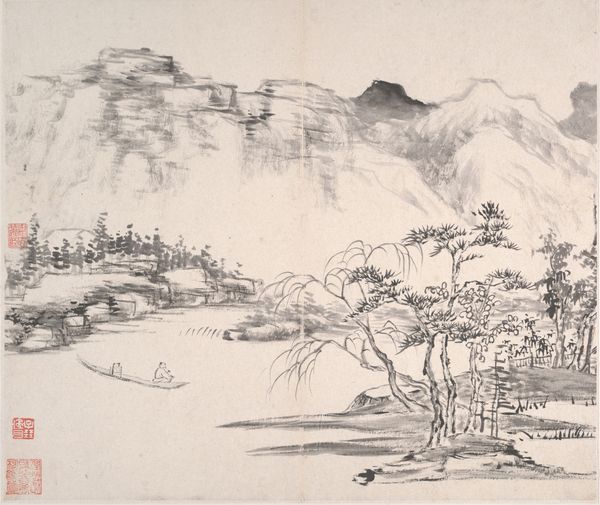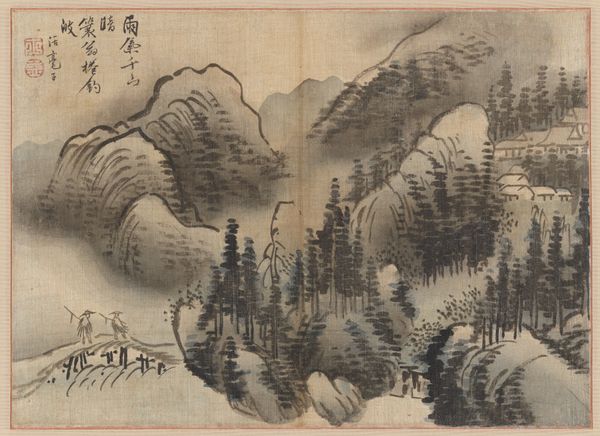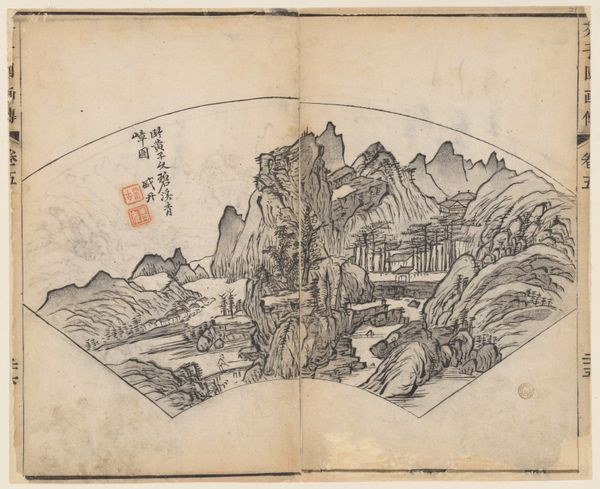
print, ink, woodblock-print, woodcut
# print
#
asian-art
#
landscape
#
ink
#
woodblock-print
#
woodcut
Dimensions: 9 5/8 x 11 13/16 in. (24.4 x 30 cm)
Copyright: Public Domain
This page from the Mustard Seed Garden Manual of Painting, created by Wang Gai around the 17th century, depicts an idealized landscape using traditional ink and brush techniques. The mountains, rendered with sharp, angular strokes, are not merely geological forms; they symbolize stability, endurance, and the sacred peaks where heaven and earth meet. The pagoda nestled among the peaks alludes to spiritual transcendence, a beacon of enlightenment amidst the natural world. These symbols are not unique to Chinese art; consider the European Romantics and their fascination with sublime landscapes, echoing a similar yearning for the infinite. The mountain as a symbol transcends geography. In both Eastern and Western traditions, we see how humanity projects its deepest longings onto these silent giants. This landscape is not just a scene; it is a mirror reflecting our collective desire for harmony and spiritual grounding. The flowing water, often associated with the transient nature of life, finds its counterpoint in the steadfast mountains, a visual dance of opposing yet complementary forces. These archetypal symbols resonate across cultures and time, engaging our subconscious on a level that words alone cannot reach.
Comments
No comments
Be the first to comment and join the conversation on the ultimate creative platform.
